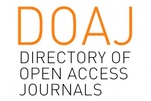Modelo para Estruturar e Gerenciar a Comunicação de Aprendizes durante as atividades de resolução de problemas em Ambientes de Aprendizagem "on-line".
DOI:
https://doi.org/10.17143/rbaad.v2i0.138Palavras-chave:
Educação a distânciaResumo
A educação a distância permite que aprendizes troquem mensagens entre si e com o instrutor de forma síncrona e assíncrona. O instrutor sobrecarrega-se de trabalho ao tentar acompanhar essas mensagens no ambiente do treinamento via Internet. As funções de gerenciamento, estruturação e monitoramento dessas mensagens têm sido desempenhadas, com limitações, por diversos ambientes de aprendizagem "on-line". A shell de ensino apresentada nesse trabalho emprega a técnica da Comunicação Estrutural. Essa técnica simula o diálogo entre o aprendiz-professor e aprendiz-aprendiz de forma estruturada. Na Comunicação Estrutural, o professor interage com o aluno apenas nas questões mais relevantes ou difíceis do domínio, as questões triviais são atendidas pela shell de ensino. Espera-se, com este ambiente, diminuir a sobrecarga de trabalho do professor nas suas atividades da Educação a Distância. Palavras-Chave: Ambiente de Ensino, Comunicação Estrutural, Diálogo Aprendiz-Tutor.Downloads
Referências
Bennett & Hodgson, (1967) Bennet, J.G., Hodgson, A.M. , "Systematics", December 1967. (Issue devoted to S.C.).
Bussmann, (1991), "Prototypical Concept Formation - An alternative Approach to Knowledge Representation", Technical memo TM-91-15.
Egan, (1976) Egan, K., "Structural Communication.", Belmont, CA: Fearon Publishers. Gagné e Medsker, (1996), "The Conditions of Learning - Training Applications", American Society for Training and Development.
Johnstone & Ambusaidi, (2001) Johnstone, Alex H., Ambusaidi, Abdullah, "Fixed-Responde Questions with a difference.", Chemistry Education: Research and Practice in Europe, 2001, vol. 2, no. 3, pp 313-327.
Lesgold, (1984) Lesgold, A. M., "Acquiring expertise", In Anderson, J. R. and Kosslyn, S. M., editors, Tutorials in Learning and Memory: Essays in Honor of Gordon Bower. W. H. Freeman.
[Lucena et al.,97] Lucena, C., Fuks, H., Milidiú, R., Macedo, L., Santos, N., Laufer, C., Fontoura, M., Neves, P., Crespo, S., Cardia, E., Torres, V., "AulaNet: Um Ambiente para Desenvolvimento e Manutenção de Cursos na WWW", Monografias em Ciência da Computação, Departamento de Informática, PUC-Rio, 1997.
Mager, (1997) Mager, R.F., "Preparing Instructional Objectives", Third Edition, CEP Press, Atlanta Georgia.
Mackenzie, (1999) Mackenzie, D., "Recent developments in the tripartite interactive assessment delivery systems (TRIADS)", Proceedings of the 3rd International CAA Conference, Loughborough University, 1999.
Mackenzie, (2000), Mackenzie, D., "Production and delivery of TRIADS Assessment on a university-wide basis", Proceedings of the 4th International CAA Conference, Loughborough University, 2000.
Merryl & Tennyson, (1978), Merryl, M.D., Tennyson, R.D., "Concept classification and classification errors as a function of relationships between examples and nonexamples", Improving Human Performance Quaterly, 1978, 7,4, pp 351-364.
Murray, (1999), Murray, T. , "Authoring Intelligent Tutoring Systems: An Analysis of the State of the Art", International Journal of Artificial Intelligence in Education, 10, pp 98-129.
Reigeluth, (1999), Reigeluth, C. M., "The Elaboration Theory: Guidance for Scope and Sequence Decisions", Instructional-Design Theories and Models, volume II, Lawrence Erlbaum Associates Publisher, pp 425-455.
Romiszowski, (1999), Romiszowski, A. , "A methodology for Case-Study in Virtual Groups", ED-Media World Conference in Educational Multimedia, Hypermedia e Telecomunications, Seatle, USA, 1999, disponível também na Associação Brasileira de Educação, obtido em 11 de abril de 2002 da biblioteca da Associação Brasileira de Educação a Distância, endereço virtual http://www.abed.org.br/texto05.doc .
Tversky, (1977), Tversky, A., "Features of Similarity", Psychological Review, 84, pp 321-352.
Villalba & Romiszowski, (2000), Villalba, C.A., Romiszowski, A., "Structural Communication and Web Based Instruction" Disponível no endereço http://web.syr.edu/~cavallal/mypapers.htm na data de 01 de junho de 2003.
Wahlster & Kobsa, (1989), Wahlster, W., Kobsa, A., "User Models in Dialog Systems", User Models in Dialog Systems (1989), Springer-Verlag, pp 4-34.
Downloads
Publicado
Como Citar
Edição
Seção
Licença
Todos os artigos publicados na Revista Brasileira de Aprendizagem Aberta e a Distância (RBAAD) recebem a licença Creative Commons - Atribuição 4.0 Internacional (CC BY 4.0).
Todas as publicações subsequentes, completas ou parciais, deverão ser feitas com o reconhecimento, nas citações, da RBAAD como a editora original do artigo.



 .
.








